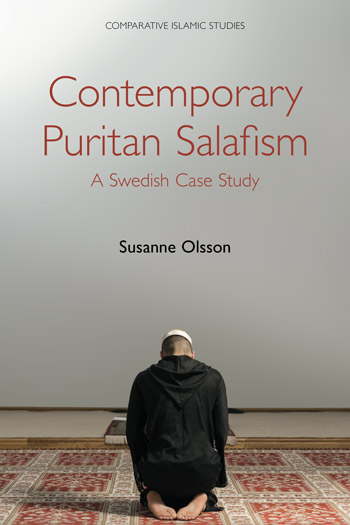
This review was first published in Fieldwork in Religion Vol 12, No 1 (2017)
Keywords: Islam; women in religion; Muslims in the UK; Salafism; conversion.
The topics of women in Islam and Salafism in Europe have garnered considerable attention from researchers, journalists, policy-makers and the wider public recently. Anabel Inge’s book The Making of a Salafi Muslim Woman, which analyses UK-based Salafi Muslim women’s everyday experiences and is based on over two years of fieldwork carried out between June 2010 and October 2012, makes an important contribution to the literature on both. The author closes an important gap in existing literature, as, unlike many other writers, she does not focus on Salafi men or security-related aspects only. By comparing Salafism with other new religious movements (NRMs) and analysing the women’s turn to Salafism as conversions, the author situates her research in a much broader context than that of scholarly work on Muslim experiences only. The study gains immensely from this comparison with other NRMs which is woven into the book. This comparative approach illustrates the relevance of this study to researchers working on a range of different religious movements in modern-day societies. The book consists of six chapters. The first chapter, in which the author traces the development of Salafism in Britain, provides a useful overview of the past and present of the Salafi community in the UK. It includes an analysis of the makeup of a community that is often (mis)presented as a monolithic entity. The second chapter discusses the fieldwork undertaken as part of this study during which a number of different methods were employed, for example participant observation, formal and informal interviews and textual analysis. While the majority of the fieldwork was conducted in different sites in London, the author also conducted one shorter visit at Salafi institutions in Birmingham. The detailed discussion of the ethical issues related to this study and of the difficulty of gaining access will be of use to researchers who focus on similarly sensitive topics or work with other closed communities. The following four chapters discuss the findings of the author’s field research. Chapter 3 examines how young women (the author’s 23 interviewees were all between 19 and 29 years old at the time of the interview) become involved with Salafism and why they chose it over other forms of Islam, whereas Chapter 4 looks at why the women remain committed to their choice, despite the relatively high social price their decisions entailed. Chapter 5 illustrates how Salafi women negotiate the strict rulings of their faith in everyday situations in a multicultural and multi-religious modern society, focusing on the areas of community, household, higher education and employment.
The last chapter—Chapter 6—looks at Salafi match-making and the challenges many Salafi women face when looking to get married. The Making of a Salafi Muslim Woman is a meticulously researched and well-presented book. The author manages to paint a nuanced picture of a complex community which is often portrayed in highly biased and stereotyped ways. Discussing the experiences of converts to Islam, born and re-born Muslims from a range of different ethnic, personal and educational backgrounds, the book challenges stereotypes and simplifying accounts of Salafi women and their experiences. Instead, it highlights the dilemmas and paradoxes which characterize the lives of many young Salafi women in the UK. Considering both the close-knit character of the Salafi community and previous abuse of the community’s initial hospitality by journalists conducting covert research, it is impressive that the author gained the trust of her interviewees. The unprecedented access the author gained allowed her to acquire detailed and comprehensive insider knowledge of Salafism in particular, and Islam in the UK in general. The author remains respectful of the women she studies but critical and independent in her analysis, which is remarkable considering the amount of publications on Muslim women that are characterized by a patronising, othering and essentialist tone. Inge succeeds in staying clear of this pitfall of research on Muslim women. Her book also stands out as an example of good practice of ethical research on sensitive and highly politicized topics. This is another reason why this book should be of interest to researchers beyond the scholarly community of those working on Salafism or Muslim women. This book makes an informative read for researchers, policy-makers, journalists, social workers and general readers. However, its value does not only lie in the data which were collected, analysed and presented in the book by the authors, but also in the avenues for future research it opens up. These could include, for example, a comparison of the experiences of Salafi women not just in London and Birmingham but also in other parts of the UK, Europe and beyond, or a more explicit comparison of the everyday realities of women within Salafism and other NRMs.









